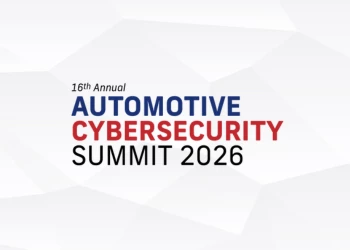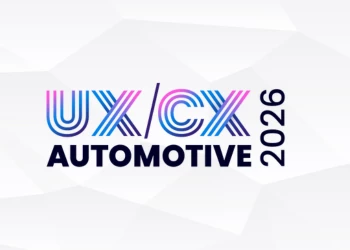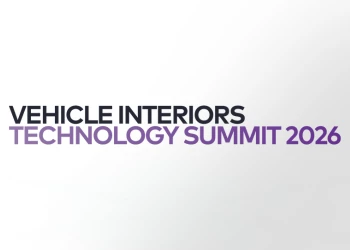Hydrogen Infrastructure: Key Developments and Future Prospects
Key Developments and Future Prospects in Hydrogen Infrastructure
Add bookmark
The global automotive industry is at a pivotal moment, as the transition from fossil-fuelled vehicles to renewable alternatives become essential for achieving long-term decarbonisation goals. This shift is crucial to addressing the climate crisis but also presents significant infrastructure challenges. As the industry strives to create sustainable solutions, the development of hydrogen refuelling infrastructure is central to this transformation.
This market report explores the current hydrogen infrastructure landscape, examining key developments in refuelling networks, milestones, and the industry’s role in meeting greenhouse gas reduction targets. It will also delve into the market dynamics and the influence of key industry players in bridging the infrastructure gaps in this emerging sector.
Current Infrastructure Landscape
The transition to hydrogen as a clean energy source has gained substantial investment, particularly in heavy-duty transport sectors where long-range capabilities are essential. However, hydrogen infrastructure remains underdeveloped, with most refuelling stations concentrated in regions with strong government support for alternative fuels, such as Germany, Japan, and California.
The development of hydrogen infrastructure faces several challenges, including high construction costs, complex storage requirements, and the need for an integrated hydrogen supply chain (spanning production, transport, and distribution). Despite these hurdles, initiatives such as California’s Hydrogen Highway Network and Europe’s H2 Mobility project aims to accelerate the expansion of hydrogen refuelling stations across key markets.
Looking ahead, the next five to ten years will see refuelling stations capable of servicing electric, hydrogen, and liquefied natural gas (LNG) vehicles. Future heavy-duty stations will integrate ultra-fast charging technologies alongside hydrogen refuelling and offer advanced digital interfaces for fleet management. These innovations will streamline operations, reduce downtime, and enhance efficiency for fleet owners. However, a significant challenge remains: the inconsistent distribution of refuelling points, which must be addressed to ensure the seamless integration of hydrogen refuelling into global transport systems.
Evolution of Infrastructure and Market Change
Several factors will shape the development of hydrogen infrastructure over the next decade. Technological innovations, regulatory frameworks, and consumer adoption will be key drivers of this transition. Additionally, automaker strategies, partnerships, and vehicle design considerations are influencing the landscape.
Automakers Partnerships:
BMW Group and Toyota Motor Corporation have strengthened their collaboration in the hydrogen sector. They are jointly developing fuel cell systems and related infrastructure, with BMW planning to launch its first mass-produced fuel cell electric vehicle (FCEV) by 2028. This partnership aims to reduce costs and meet growing demand for both commercial and passenger vehicles.
Oliver Zipse, Chairman of the Board of Management, BMW AG, commented: “This is a milestone in automotive history: the first ever series production fuel cell vehicle to be offered by a global premium manufacturer. Powered by hydrogen and driven by the spirit of our cooperation, it will underscore how technological progress is shaping future mobility. And it will herald an era of significant demand for fuel cell vehicles.”[BM1]
Automakers like Toyota, Honda, Hyundai, and BMW are leading the transition to hydrogen by releasing hydrogen-powered models. For example, Toyota’s Mirai fuel cell vehicle has contributed to its investments in hydrogen technology, and Hyundai‘s Nexo is expanding hydrogen infrastructure in South Korea and Europe through strategic partnerships for refuelling stations.
Energy companies such as Shell, BP, and TotalEnergies are advancing hydrogen production and refuelling networks. Shell is developing stations across Europe and Asia, while Uniper in Germany is focusing on large-scale green hydrogen production. Governments worldwide recognise hydrogen's role in decarbonising transport, with Germany committing €9 billion to its National Hydrogen Strategy and Japan aiming to install 1,000 hydrogen stations by 2030.
The collaboration between automotive manufacturers, energy providers, and governments is crucial to scaling up hydrogen infrastructure. This cooperation helps overcome the technological and financial barriers associated with hydrogen adoption.
Refuelling Grids in Europe: Plans and Timelines
The European Union (EU) and individual nationals have set clear timelines for expanding refuelling infrastructure. By 2025, H2 Mobility Germany aims to reach 400 hydrogen refuelling stations. The European Hydrogen Backbone initiative will develop a 23,000-kilometre hydrogen pipeline network by 2030, with countries like UK and Germany leading the expansion of refuelling infrastructure.
EU policies, such as the Alternative Fuels Infrastructure Directive (AFID), mandate member states to establish charging and refuelling stations, with targets for hydrogen and electric vehicles. By 2030, the EU aims to install 3 million charging points and significantly expand hydrogen refuelling stations. Governments are also offering incentives such as subsidies, tax breaks, and consumer incentives to accelerate the rollout of green infrastructure.
To meet net-zero goals by 2050, the EU has targeted the sale of only emissions-free cars by 2035. This policy shift requires automotive manufacturers to significantly reduce emissions, making the transition to clean transport both feasible and sustainable.
Greenhouse Gas Targets and Their Impact
By 2030, the EU aims to reduce transport emissions by 30% compared to 2005 levels, including stricter vehicle emissions standards like the Euro 7 standard. The EU has committed to ensuring that 55% of all new cars sold by 2030 are zero-emission vehicles (ZEVs), a goal that will require substantial infrastructure upgrades. Similarly, California aims for 100% zero-emission vehicle sales by 2035.
Looking ahead to 2050, the EU has committed to achieving net-zero emissions across all sectors, including transport, which will require the decarbonisation of the entire vehicle fleet. Germany's national targets align with these goals, aiming to reduce transport emissions by 40% by 2030 and reach net-zero by 2050.
The automotive industry is also investing in R&D to improve vehicle efficiency and reduce costs. Companies like Tesla are advancing battery technology, while others, such as Hyundai, focus on fuel cell technology. These innovations will be crucial in meeting the 2030 and 2050 targets.
Ultimately, the automotive sector's success in reducing emissions depends on continued investments in infrastructure. By aligning vehicle production with the rollout of charging and refuelling stations, the industry can accelerate the transition to sustainable mobility, helping to meet climate targets.
Conclusion
Despite current limitations in hydrogen infrastructure, significant investments are being made to expand refuelling networks. Collaboration between automotive manufacturers, energy providers, and governments is key to overcoming technological and financial barriers. Companies such as Toyota, BMW, and Shell are leading the charge for hydrogen adoption, while governments set ambitious targets and offer incentives to support infrastructure development.
As the market evolves, infrastructure development will continue to expand, ensuring the seamless integration of sustainable fuel technologies and contributing to the automotive industry's decarbonisation efforts.
Bibliography
1. Otaviano, Canuto & Martins Jorge, Antonio. “The Automotive Transition on the Road to Decarbonization.” Policy Center For the New South. October 9, 2024. https://www.policycenter.ma/publications/automotive-transition-road-decarbonization
2. TUV SUD. “Europe is Increasingly Adapting Its Growing Hydrogen Refuelling Infrastructure to Include Heavy-Duty Vehicle Refuelling”. February 1, 2024. https://www.tuvsud.com/en-us/press-and-media/2024/february/europe-is-adapting-its-hydrogen-refuelling-infrastructure-to-include-heavy-duty-vehicle-refuelling
3. Classen, Maren. “Fuelling Net-Zero: What’s Next for Alternative Fuels and Their Infrastructure?”. January 21, 2025. https://www.iru.org/news-resources/newsroom/fuelling-net-zero-whats-next-alternative-fuels-and-their-infrastructure
4. Toyota UK Media Site. “Toyota Motor Corporation and BMW Group Strengthen Collaboration On Progress Towards A Hydrogen Society”. September 5, 2025. https://media.toyota.co.uk/toyota-motor-corporation-and-bmw-group-strengthen-collaboration-on-progress-towards-a-hydrogen-society/
5. Toyota Newsroom. “Toyota Provides Technology Roadmap at the 2025 Hydrogen and Fuel Cell Seminar”. March 13, 2025. https://pressroom.toyota.com/toyota-provides-technology-roadmap-at-the-2025-hydrogen-and-fuel-cell-seminar/
6. Hyundai Newsroom. “Hyundai Motor Group Unveils End-to-End Hydrogen Solutions and Hydrogen Roadmap at H2 MEET 2024”. September 25, 2024. https://www.hyundai.news/uk/articles/press-releases/hyundai-motor-group-unveils-hydrogen-solutions.html
7. Shell. “Shell Hydrogen Projects”. https://www.shell.com/what-we-do/hydrogen.html#tab-production
8. The Federal Government. “National Hydrogen Strategy Update”. July, 2023. chromeextension://efaidnbmnnnibpcajpcglclefindmkaj/https://www.bmwk.de/Redaktion/EN/Publikationen/Energie/national-hydrogen-strategy-update.pdf?__blob=publicationFile&v=2
9. European Commission. “Alternative Fuels Infrastructure”. https://transport.ec.europa.eu/transport-themes/clean-transport/alternative-fuels-sustainable-mobility-europe/alternative-fuels-infrastructure_en
10. New Zealand Foreign Affairs & Trade. “Japan: hydrogen strategy”. November, 2023. https://www.mfat.govt.nz/en/trade/mfat-market-reports/japan-hydrogen-strategy-november-2023
11. ehb. “The European Hydrogen Backbone (EHB) Initiative. https://ehb.eu/
12. European Commission. “The European Green Deal.” https://commission.europa.eu/strategy-and-policy/priorities-2019-2024/european-green-deal_en
13. T&E. “Road to Net Zero”. https://www.transportenvironment.org/topics/cars#:~:text=Their%20current%20target%20is%20a,to%20avoid%20catastrophic%20climate%20change
14. European Commission. “Communication from the Commission to The European Parliament, The Council, The European Economic and Social Committee and The Committee of the Regions Empty”. July 14, 2021. https://eur-lex.europa.eu/legalcontent/EN/TXT/HTML/?uri=CELEX:52021DC0550
15. California Air Resources Board. “Zero-Emission Vehicle Program”. https://ww2.arb.ca.gov/our-work/programs/zero-emission-vehicle-program
16. Ozsevim, Ilkhan. “Tesla’s EV Battery Production and Global Gigafactory Network”. AMS. https://www.automotivemanufacturingsolutions.com/ev-battery-production/teslas-ev-battery-production-and-global-gigafactory-network/45873.article



















